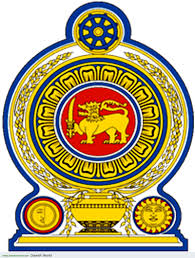Coast Conservation and Coastal Resource Management Department
The combating Coastal Erosion dates back to many centuries, and Coast Protection works were handled by various departments at various times prior to 1963. The realization of the government, that a comprehensive approach to coastal erosion control is required, led to establishment of a Coast Protection Engineering Unit in the Colombo Port Commission in 1963. In 1978, the Coast Protection Engineering Unit was transferred to Ministry of Fisheries and Aquatic Resources (MFAR) and was functioned as Coast Conservation Division.
In 1981, parliament enacted the Coast Conservation Act No. 57 of 1981, which is "an act to make provision for a survey of the coastal zone and the preparation of a Coastal Zone Management Plan; to regulate and control development activities within the coastal zone; to make provision for the formulation and execution of schemes of work for coast conservation within the coastal zone; to make consequential amendments to certain written lows; and to provide for matters connected therewith or incidental thereto". Accordingly the Coast Conservation Division was upgraded to Coast Conservation Department (CCD), in 1984 and the administration, control, custody and management of the coastal zone have been vested with Director, Coast Conservation. Amendment to the Act was passed in 1988 as the Coast Conservation (Amendment) Act No. 64 of 1988. The department was further upgrade in July, 2009, appointing the first Director General, Coast Conservation.
The Coast Conservation Act requires having a survey of the Coastal Zone and preparation of a Coastal Zone Management Plan (CZMP). The CZMP, prepared by the CCD, was adopted by the Government and implemented as the Coastal Zone Management Plan 1990. A Resource Management strategy for Sri Lanka’s coastal region, “Coastal 2000”, which provided the direction for Coastal Resources Management of Sri Lanka, was prepared in1992. The first revised CZMP was implemented since 1997. The last revision of the CZMP was done in 2004 and is currently being implemented.
Objectives
Coastal regions are home to a large and growing population in Sri Lanka. The high densities of population have produced many economic benefits from the coastal resources, in particular from fishing, tourism, and maritime activities. More the economic activities have been result improved transportation links, developed industrial and urban centers, and modified physical nature in the coastal zone. Eventually the increasing beneficiaries cause for degrading the Natural Coastal Environment. Hence Engineering and Management of Coastal Zone is vital for the sustainability of Coastal Resources.
Listing Details
Address
4th Floor, Ministry of Fisheries Building, New Secretariat, Maligawatta, Maradana,, Colombo 10, Sri Lanka
Telephone
+94 11 244 9754
Website


